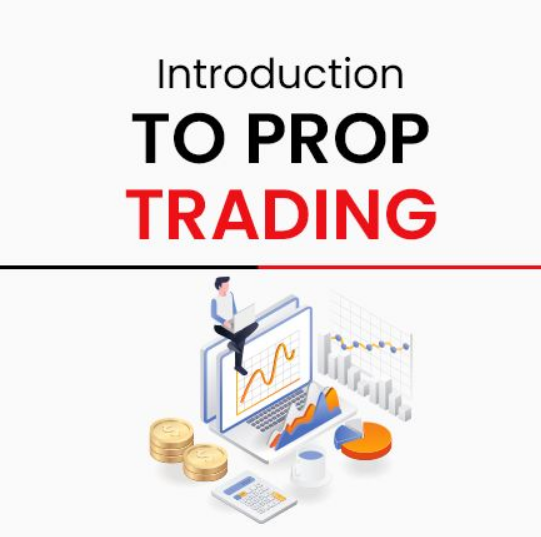Proven Prop Trading Company: Advanced Tools & Strategies
In today’s rapidly evolving financial markets, a prop trading company must harness the power of advanced backtesting, automation, and regulatory compliance to sustain competitive advantage. This blog provides an in-depth guide into the tools, techniques, and practices that advanced prop trading firms utilize to test strategies, manage risks, and maximize returns.

Understanding the Prop Trading Landscape
Proprietary trading companies have evolved from simple trading desks to sophisticated tech-driven entities. They leverage algorithmic systems, deep historical data analysis, and real-time market integration to build and refine trading strategies. In an environment governed by strict regulatory frameworks like MiFID II, ESMA, and NFA, compliance is as crucial as performance.
Market Dynamics and Regulatory Frameworks
Regulatory oversight shapes the operational architecture of prop trading companies. Firms must navigate rules that ensure transparency and risk management, including maintaining capital adequacy and conducting rigorous stress tests. Major markets now demand that trading strategies incorporate regulatory risk management to ensure sustainability.
Essential Backtesting Techniques for Prop Trading Firms
Backtesting is the foundation upon which effective trading strategies are built. When executed correctly, it reveals the strengths and weaknesses of a strategy under different market conditions. However, the process is complex and requires careful consideration of data quality, biases such as survivorship bias, overfitting, and look-ahead bias.
Advanced Automated Backtesting Tools Comparison
Prop trading companies rely on specialized tools to ensure their strategies are robust. Below is a comparison table highlighting key features of leading backtesting platforms:
| Tool | Backtesting Features | Data Quality | Integration | Pricing | Prop Firm Suitability |
|---|---|---|---|---|---|
| TradingView | Vectorized and event-driven; supports custom scripts in Pine Script | Extensive historical data across asset classes | API access, broker integration | Free tier available; premium tiers from $14.95/month | Excellent for real-time monitoring, strategy prototyping |
| MetaTrader 5 | Robust backtesting with tick data support; handles slippage and commissions | High-quality historical data from multiple brokers | Expert advisors, algorithmic trading integration | Primarily free via brokerage accounts | Ideal for forex and CFD strategies; team collaboration possible |
| NinjaTrader | Comprehensive event-driven testing; supports automated parameter optimization | Deep historical tick and bar data available | Robust API, integration with third-party analytics tools | Free simulation; paid licenses starting around $1,099 | Suited for both retail and prop firm environments due to scalability |
Advanced Backtesting Practices: Walk-Forward and Out-of-Sample Testing
Traditional backtesting offers insight, but integrating walk-forward optimization can significantly enhance strategy reliability. By iteratively testing and recalibrating strategies on out-of-sample data, firms minimize the risk of curve-fitting and maximize real-world performance.
Mitigating Common Backtesting Pitfalls
Successful backtesting requires an awareness of inherent pitfalls. Common issues include:
- Overfitting: Excessively tailoring your model to past data. Mitigation: Use cross-validation and keep the model parsimonious.
- Look-Ahead Bias: Incorporating future data inadvertently. Mitigation: Ensure that only data available at the time of the trade is used.
- Survivorship Bias: Focusing solely on companies that have persisted over time. Mitigation: Incorporate data from delisted stocks.
Leveraging Real-Time Data and Algorithmic Strategies
The integration of real-time data streams with automated backtesting tools facilitates rapid decision-making. Prop trading companies utilize algorithmic trading strategies that continuously adjust parameters based on current market conditions. By leveraging APIs for live data feeds, platforms like QuantConnect and Interactive Brokers enable traders to bridge the gap between historical analysis and live trading.
Integrating Data Quality and Automation
Data quality is paramount when testing and implementing algorithms. Whether you are using tick data, minute bars, or daily summaries, accurate and granular data ensures that automated systems can simulate market conditions effectively. Investments in premium data services are often necessary to obtain the depth of historical data required for robust backtesting.
Case Studies: Real-World Prop Trading Company Success Stories
Many established prop trading companies have refined their strategies using advanced backtesting tools and methodologies. Detailed case studies reveal how these firms overcame common challenges.
Case Study: Enhancing Sharpe Ratios Through Automated Backtesting
A leading prop trading firm recently incorporated walk-forward analysis using NinjaTrader and MetaTrader 5. The firm was struggling with overfitting strategies that performed well in backtests but faltered in live trading. By integrating automated parameter optimization and rigorous out-of-sample testing, they improved their Sharpe ratio from 1.2 to 1.8 and significantly reduced maximum drawdowns. This approach not only refined their strategy selection but also enhanced risk management protocols.
Practical Implementation: Step-By-Step Backtesting and Strategy Deployment
For practitioners ready to implement these advanced techniques, here’s a step-by-step guide:
- Data Collection: Source high-quality historical data from reputable providers. Prefer tick data or high-resolution bar data for precision.
- Initial Backtest: Run initial backtests on historical data using platforms like TradingView or MetaTrader 5 to establish baseline performance.
- Walk-Forward Optimization: Split your data into training and testing sets. Continuously recalibrate your strategy parameters using out-of-sample data.
- Stress Testing: Simulate adverse market conditions to measure strategy resilience.
- Forward Testing (Paper Trading): Transition to live simulation with paper trading, monitoring key metrics such as Sharpe ratio, profit factor, and drawdown.
- Live Deployment: Finally, implement your strategy in a live environment with real-time risk management controls.

Expert Guidance and Pro Tips
Pro Tip: Always incorporate automated parameter optimization with your backtesting frameworks. Even minor improvements in optimization can yield significant increases in risk-adjusted returns.
Industry Insight
Regularly review regulatory changes. For example, MiFID II mandates continuous risk assessments which can influence algorithmic adjustments during volatile periods. Incorporate these factors within your simulation frameworks to maintain compliance.
Next Steps: Deepen Your Prop Trading Strategy
As a final recommendation, prop trading professionals should consolidate their learnings by implementing a dedicated Risk Management Checklist and a Trading Journal Template that tracks performance metrics and compliance milestones. This proactive approach ensures not only strategy robustness but also regulatory alignment.
For additional insights and detailed case studies, consider exploring our resources on Advanced Prop Trading Strategies and Prop Trading Risk Management for further reading.
By integrating these advanced methodologies, your prop trading company can achieve a strategic edge, driving both profitability and long-term sustainability. As markets evolve, continuous adaptation and learning become key to maintaining success in the dynamic world of proprietary trading. Stay informed, keep testing, and refine your strategies to thrive in today’s competitive environment.
As of October 2023, these insights reflect the current trends and best practices in the prop trading industry.





